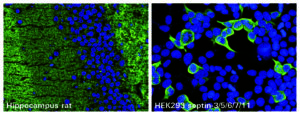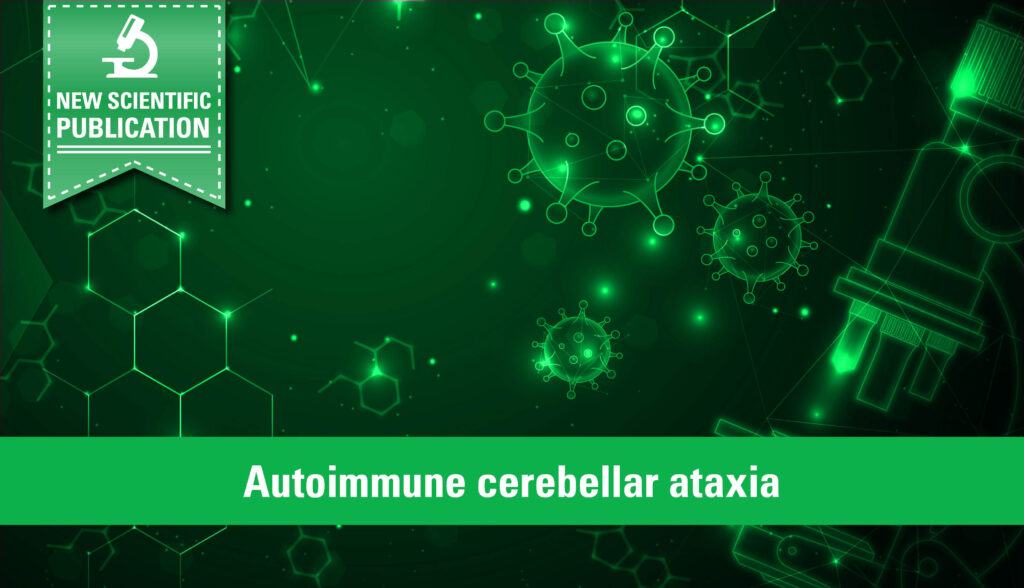The cytoskeleton protein septin-3 has been identified as a novel target antigen of autoantibodies in patients with paraneoplastic cerebellar ataxia. The new biomarker was discovered in a collaborative study between scientists at EUROIMMUN, the University of Heidelberg and further clinics in Germany.
Septins are cytoskeletal proteins with multiple roles in cell division, cellular polarisation, morphogenesis and membrane trafficking. Septin-5 and septin-7 are already known target antigens of autoantibodies in neurological diseases. The new autoantibody was identified in an analysis of three patient sera with similar immunofluorescence staining patterns on cerebellar and hippocampal sections. Using immunoprecipitation and mass spectrometry, septin-3, -5, -6, -7 and -11 were identified as candidate target antigens. These proteins were then expressed recombinantly in HEK293 cells either individually, as complexes or in combinations missing individual septins. The cells were used in recombinant-cell indirect immunofluorescence assays (RC-IIFA) to detect the corresponding autoantibodies.

The three patient sera reacted with recombinant cells co-expressing septin-3/5/6/7/11, while none of the control sera did. Use of different septin combinations confirmed the autoantibodies’ specificity for septin-3. In RC-IIFA analyses, the patient sera reacted only with cells ex
pressing septin-3, either individually or in complexes. The specificity was further verified by abolishment of tissue IIFA reactivity through prior neutralisation of the autoantibodies with recombinant septin-3. All three patients presented with progressive cerebellar syndrome and responded poorly to immunotherapy. All had cancer (2x melanoma and 1x small-cell lung cancer). Expression of septin-3 was demonstrated in resected tumour tissue available from one patient.
Due to the different clinical phenotypes reported in patients with anti-septin-3, -5 and -7 autoimmunity, these autoantibodies may be markers for different clinical presentations. Thus, septin-3 IgG-associated autoimmune cerebellar ataxia may constitute a novel paraneoplastic neurological syndrome (PNS). The proposed strategy for determination of anti-septin autoantibodies is RC-IIFA with the complex septin-3/5/6/7/11 as a screening tool to investigate serological samples with a characteristic staining pattern on neuronal tissue sections. Autoantibodies against individual septins can subsequently be confirmed by RC-IIFA expressing single antigens.
Read more about the discovery of anti-septin-3 autoantibodies in the Journal of Neuroinflammation
Miske R., Scharf M. et al. Septin-3 autoimmunity in patients with paraneoplastic cerebellar ataxia. J Neuroinflammation 20, 88 (2023). https://doi.org/10.1186/s12974-023-02718-9
